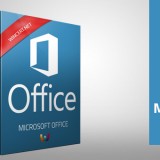Ways to strategically plan your eLearning website
Building a website is very difficult from scratch is still a myth. The reality is that web development has gotten way easier from HTML, PHP CSS coding (that was difficult to master and time taking) to drag and drop content management systems. CMS or a.k.a website building platform like WordPress has made building an eLearning website, accessible to everyone.

With the correct authoring tools and plug-ins, anybody with basic knowledge of website development can transform the online learning platform into a WordPress LMS (Learning management system). WordPress LMS can assist you in taking classes, developing the course, evaluating learners, and even monetizing your course creation efforts.
This article is focused on strategically planning your eLearning website using WordPress LMS. But before we jump to the tips, let us understand what WordPress LMS is.
What is WordPress LMS?
A WordPress LMS plugin is a ready-made piece of software to plug in your WordPress website. WordPress LMS plugin allows you to develop, organize, deliver and monetize online classes directly from your website. The WordPress LMS plugin for your eLearning website will be available once you have installed WordPress.
How to strategically plan an eLearning website
In other words, an LMS should include all of the features you’ll need to run a fully functional online school. There are LMS-specific platforms, where you can rapidly put up a system like this in WordPress and save a significant amount of money and time. Let’s have a look at how it works
1. Deciding purpose of eLearning website
First, you need to decide on the subject or stream of teaching you want to focus on for your entire project. The second aspect is whether you plan to provide free online education or charge for online courses.
As you may be aware, online learning is a wealthy sector, therefore monetizing your eLearning (depending upon the target audience) is a viable option.
Tip:
- You can simply choose one of the WordPress LMS plugins that offer monetization features.
- Keep in mind that a combination of the two ways is also an option. It’s common practice to make certain content on your LMS available for free while keeping other courses private. The target audience will receive a taste of your content this way, and you will be able to construct a clear funnel to promote conversions for business purposes.
2. Selecting a domain and eLearning website name
You will need another hosting or plugin on WordPress to register the domain name. If you want a domain name that reflects your future website, company, or blog, try some creative ideas.
Tip:
It should be recognizable, memorable, catchy, and, most importantly, available.
3. Plan structure of eLearning website
Mapping out the structure is the most important part of designing a website which includes, selecting which pages you want to include on your website and which lessons to publish initially. Here’s a brief rundown of how a simple WordPress LMS site may appear:
- Home page (introduction)
- Course listing (perhaps with pricing)
- Student testimonials
- About us page
- Student forums
- Course pages (this page includes most content)
Having an easy structure will make navigation and the user interface of the LMS easier, and thus implementation easier. As a result, it’s preferable to start with the basics and include only the parts and information that are important. You’ll need a home page, an About Us page, and a content page at the very least.
4. Organize your eLearning website
Consider your eLearning website to be a content bank, be it text, audio, or video. The more material you add to your website, the more significant your website structure becomes.
Tip:
Focus on structuring it in a way that makes sense to your visitors and is simple to navigate.
5. Customize your eLearning website
.You can change additional aspects of your website, such as Tagline and title, Background and text Colors, Image for the background, Menus \sWidgets.
With the help of the additional plug-ins, you can add a third-party marketplace, blog editor, SEO, page optimization, etc.
Conclusion:
WordPress LMS has made developing an eLearning website accessible to everyone, everywhere. This huge online library should be strategically planned to target the right audience and monetize. Therefore eLearning website building planning includes deciding upon the purpose, selecting the name, mapping out the structure, organization, and customization.
Disclaimer: This is a sponsored article.













